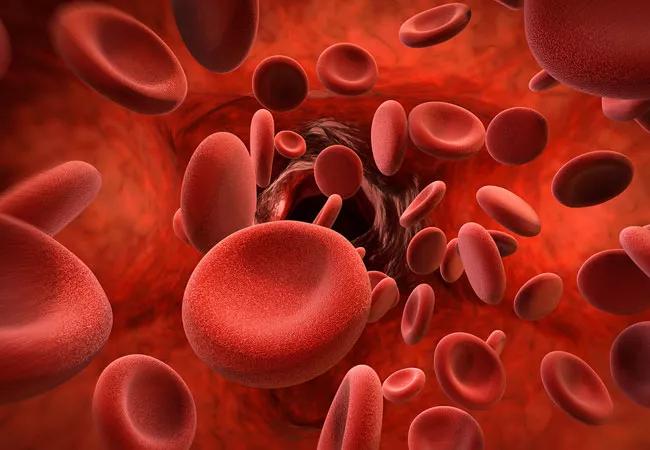Case series links catastrophic outcomes to therapy initiation within 48 hours post-procedure

Cranial surgery patients are nine times more likely to experience catastrophic intracranial hemorrhage (ICH) if they receive therapeutic anticoagulation in the first two days after surgery than if anticoagulation therapy is delayed. Risk is highest in those who undergo intra-axial exploration and is not influenced by concurrent antiplatelet medication.
Advertisement
Cleveland Clinic is a non-profit academic medical center. Advertising on our site helps support our mission. We do not endorse non-Cleveland Clinic products or services. Policy
So concludes a new study about the Cleveland Clinic experience with therapeutic anticoagulation within seven days after cranial surgery. Published in The Journal of Neurosurgery (Epub 2024 May 3), the report is the largest available outcomes analysis in an area of neurosurgical practice for which evidence to guide management is limited.
“Our findings are comparable to systematic studies of early anticoagulation following cranial intervention in animals,” says Cleveland Clinic vascular neurosurgeon Mark Bain, MD, MS, the study’s senior author. “They show that delaying therapeutic anticoagulation until at least 48 hours after cranial intervention should be considered, if a patient’s circumstances permit, because it may significantly reduce the risk of catastrophic ICH.”
Thrombotic complications after cranial neurosurgery are challenging to manage and associated with significant mortality. Anticoagulation is the therapeutic mainstay, but the benefits and timing of initiation must be balanced against the risk of provoking ICH.
Current literature suggests that conditions such as deep vein thrombosis (DVT), pulmonary embolism (PE) and cerebral venous sinus thrombosis (CVST) are most likely to occur within the first week after cranial surgery. However, most neurosurgeons do not prescribe anticoagulants until seven to 10 days after the procedure, based on limited available data and anecdotal experience, which results in inconsistent and sometimes suboptimal care.
“The general consensus among neurosurgeons is that therapeutic anticoagulation is highly risky in patients who have undergone invasive cranial surgery,” says the study’s first author, Mark Davison, MD, a PGY-5 resident in neurological surgery at Cleveland Clinic. “The goal of this study was to analyze our extensive experience with these procedures and identify outcome patterns related to thrombosis management to help clinicians make better evidence-based decisions.”
Advertisement
Drs. Bain, Davison and colleagues performed a retrospective, single-center analysis of all adults who underwent cranial surgery at Cleveland Clinic from 2010 through 2023. Using their institutional cranial surgery registry, they identified all patients who received early (within seven days of surgery) therapeutic anticoagulation for imaging-confirmed thrombotic or thromboembolic conditions including PE, DVT, CVST, portal vein thrombosis or non-iatrogenic ischemic stroke. Patients who received anticoagulation for strictly prophylactic indications were excluded.
Incidence of ICH that resulted in reoperation or death within 30 days of anticoagulation initiation (“catastrophic ICH”) was the primary outcome. The secondary outcome was new or worsening bleeding, as seen on cranial CT.
Comparisons of cohorts were performed, as were cumulative analyses of the primary and secondary outcomes, based on anticoagulation start time.
Overall, 71 patients met the inclusion criteria. The cohort was 52% male and had a mean age of 53.8 years. Indications for early therapeutic anticoagulation — which was initiated on mean postoperative day 4.3 — were predominantly pulmonary embolism (40.8% of cases), CVST (28.2%) and DVT (23.9%).
Seven patients (9.9%) experienced catastrophic ICH, which was significantly associated with earlier anticoagulation (P = .02). Six of those individuals had undergone intra-axial exploration during cranial surgery. New or worsening bleeding was seen on postoperative CT in 15 of 58 patients who had such imaging available (25.9%).
Advertisement
Compared with extra-axial exploration, intra-axial exploration was associated with significantly increased risk of catastrophic ICH (odds ratio [OR] = 8.5; P =.04), a finding in keeping with the neurosurgical literature.
“Violation of the brain parenchyma exposes a relatively large area of cut brain surface comprising tiny perforating capillaries and venules with the propensity to rebleed,” Dr. Davison explains. “In addition, a considerable proportion of our patients had intra-axial tumors, which may have, in the case of subtotal resection, increased the likelihood of postoperative hemorrhage.”
When therapeutic anticoagulation was initiated within 48 hours after surgery, catastrophic ICH was 9 times more likely (OR = 8.9; P = .01) than when it was initiated after 48 hours. The cumulative risk of catastrophic ICH declined as the initiation of anticoagulation was delayed within the study’s time window, from 21.1% on postoperative day 2 to 9.9% on postoperative day 7.
No association was found between concurrent antiplatelet medication and ICH incidence or new or worsening intracranial bleeding.
The researchers believe their study is the largest reported experience to date with early therapeutic anticoagulation following invasive cranial neurosurgery. However, they acknowledge the limitations of their series’ single-center, retrospective design and underscore that their findings are too preliminary to represent recommendations. They also caution that their results are not generalizable to cranial surgery populations with strictly prophylactic indications for postoperative anticoagulation, who may be more prone to ICH.
Advertisement
“This report recapitulates the outcomes of our best clinical judgment,” Dr. Bain concludes. “The findings may help guide neurosurgeons as they manage patients through challenging postoperative circumstances. Future prospective, multi-institutional research is needed to enable more granular assessment of risk factors for ICH following cranial surgery and how these should shape the timing of therapeutic anticoagulation.”
Advertisement
Advertisement

Today’s research helps illuminate tomorrow’s needs

Novel ‘assessment center’ will be a partner in care by serving as an engine of structured data collection

What it’s like working in neurology critical care and what to consider before entering the specialty

Scientific program chair reflects on what may resonate longest from this year’s neurosurgery conference

Large retrospective study suggests DOACs are safe, effective alternative to low-molecular-weight heparin in complex patient population

Input from these central stakeholders is leading us to design for healing and hope

Findings help close the knowledge gap around VTE practice patterns

Results may refine surgical selection criteria and advance clinical trial design